#george's marvelous medicine
Text
Before anything else, I am a writer.
I would also call myself a singer. Or a textile artist, maybe. I could be a sibling, or a friend, or a student, or a baker, or a gardener, or a cook. There is an incredible number of labels you could put on me that would fit.
When I was a kid, I would deny so vehemently that I ever wanted to be a writer. I used to read like it was breathing, and when my relatives would interrupt me in the middle of a story to ask if I'd ever want to author one myself, I would tell them that reading and writing were two different things, thank you very much, and just because I was a reader didn't mean I was a writer.
But, through that love for reading, I ended up figuring out what the phrase "Stockholm Syndrome" meant much younger than you might expect. Think eight or nine, after reading the "Series of Unfortunate Events." Which, if you didn't know, is a notably bad place to garner vocabulary. Lemony Snicket is in the habit of explaining words in a context entirely different from what they actually mean. Still, I have a vivid memory of sitting in a corner of the living room on Thanksgiving as a nine-year-old (reading, naturally), and hearing my sister's boyfriend ask my mom for clarification on the concept of Stockholm Syndrome. I looked up from my book and told him what it was -- much to the chagrin of my parents, who were wondering where I'd learned it.
It's ironic that it was a book that introduced me to the concept of Stockholm Syndrome, and that it was one of the few phrases that Lemony Snicket ever explained correctly. I doubt you're unfamiliar with it, but it means to be trapped or held captive by something, and to grow to love it anyway.
When I think about it now, I realize that it was inevitable that I learned to love to write. I also hated learning how to read, but my dad taught me before I even started kindergarten, and I loved knowing I was better at it than the other kids. It was my way of setting myself apart. I drank so desperately from the books I read that I couldn't help but fill myself with words.
And then, just as inevitably, they had nowhere to go.
That was the first part of my own experience with Stockholm Syndrome. I was folded into myself like origami, with so much to say and no space for it. Every word I'd ever read was crammed into my lungs, and I didn't know what to do with them. It wasn't until I found other people's writing (like Broadway shows I loved, intersectional queer lit, characters that looked and felt and breathed like me, etc.) that I ever wanted to make my own.
I didn't start writing until I was 13. I found my first inspiration -- and what it was, I'll never tell because lord, is it embarrassing -- and I made something out of it. It felt like reaching down into my chest and taking hold of something I barely knew was there and turning myself out onto the page, but in a different font. Whether that be Times New Roman or the chicken scratch I had going in 4 different notebooks simultaneously, there was always something to say. I could never get away from it. And, as the Stockholm Syndrome mention might suggest, I grew to love it.
There is a part of me now that is inextricable from my writing. I put words together to get feelings out, in a way that is both authentic to myself and more beautiful than anything I have ever been. I put words together to process what I've been through. I put words together to write lives that I've never lived, and I grow vicariously through them. I know that love exists because I write it into existence. I am all that I need to be through the words I put down.
At the end of the day, yes. I am fully and completely bound to my writing. I am trapped in a way that I will never experience elsewhere. I would be nothing without it.
But fuck, I love it.
#my writing#that definition definitely isn't what Stockholm Syndrome actually means#nor is it really in the spirit of Stockholm Syndrome#but give me my creative license this is a post about being a writer okay#I'm gonna embellish some shit#this is what it means to be a writer#to me#writer#author#original writing#stream of consciousness#my love for writing#lemony snicket#RAISED me#I read all of those books#series of unfortunate events#absolutely ate with those#I read chasing redbird#Charlie and the chocolate factory#the witches#matilda#george's marvelous medicine#the outsiders#I did a book report on#life of pi#in fifth grade#(and understood the book)#would love to know what Mrs. Grimmer thought of that#the secret life of bees#absolutely fucking gas book
7 notes
·
View notes
Text

HAPPY ROALD DAHL DAY EVERYBODY!!!
Get as much books as you want, To celebrate this spectaculous occasion decided to have a few of the characters from four of my top favorite Roald Dahl Stories which is Willy Wonka, Charlie Bucket, Matilda, Mr. Fox & BFG. Hope you like it!!!
#art#fanart#roald dahl#roald dahl day#charlie and the chocolate factory#matilda#fantastic mr fox#bfg#james and the giant peach#george's marvelous medicine#the witches
4 notes
·
View notes
Text
Watching a video about the upcoming Charlie and the Chocolate Factory prequel reminded me of another Roald Dahl book I read as a kid, George's Marvelous Medicine.
It's a story where a kid is mad at his mean grandma, and decides to play a prank on her by mixing a bunch of random gunk together and substituting it for her medicine. Since this is a children's book, the expected effects of going off her meds and ingesting a cocktail of livestock medicine, toxic substances, and spices are replaced by Granny turning into a giant, which also happens when George feeds some to the chickens. Attempts to recreate the "medicine" fail, with Granny drinking one and shrinking until she disappears.
I also remembered that at one point, I made a list of all the medicine's ingredients to figure out which ones were ultimately left out. Which is...probably not a neurotypical response to reading a Roald Dahl book.
6 notes
·
View notes
Text
#January 15#Martin Luther King Jr#the hunchback of notre dame#roadside prophets#george's marvelous medicine
1 note
·
View note
Text
If your favorite isn't there, put it in the tags
#polls#roald dahl#children books#matilda#the witches#george's marvellous medicine#james and the giant peach#charlie and the chocolate factory#the bfg#the twits#fantastic mr fox#danny the champion of the world
77 notes
·
View notes
Text
Sorry we replaced your boyfriend's perscriptions with George's Marvelous Medicine and he shrunk down really tiny to the point you can't see him but trust us when we say he's in this now empty mayonnaise jar. We'd ask George to make his Marvelous Medicine backwards to make your boyfriend big again but the boy passed out from the fumes of combining all the cleaners under the sink together. Sorry again.
2 notes
·
View notes
Text
jesus fucking christ the roald dahl children's book censorship is the dumbest shit ever

ITS A FUCKING TRACTOR
#atlas speaks;#they truly are censoring the dumbest shit here#esio trot too?? the one about a lonely man buying a bunch of tortoises???#THEY CENSORED THE EXPLODING DOG IN GEORGE'S MARVELLOUS MEDICINE??#THE BOOK ABOUT HUGE EXAGGERATION???#they're children's books from Another Time ofc theyre gonna have problematic shit!!!#why hide that??? there is no racism in ba sing se??? motherfucker???
5 notes
·
View notes
Text
— micaela's april recs

ty to all these amazing writers who have left me with butterflies in my stomach and/or tears rolling down my face, much appreciated <3

CRIMINAL MINDS
— spencer reid.
soulmates by @radiant-reid
tear me apart by @literaila
private display of affection by @poguesofthebau
that's my wife by @wheelsup
unlucky in love by @criminalmindzjunkie
sinking by @mggpleasedontlookhere

PANIC
— dodge mason.
cemetery drive by @riffaist
love story by @biqherosix
↳ steal my girl

HARRY POTTER
— fred weasley.
john wayne by @shadowsinger11
chosen sister by @potter-imagines
how to steal a book (and a heart) by @theweasleysredhair
late night stroll by @httpbakugou
sheer luck by @heloisedaphnebrightmore
frustrations by @nextdoor-neighbors
— george weasley.
broken people by @wondernimbus
— draco malfoy.
two sworn enemies by @wondernimbus
odd one out by @panda-noosh
— oliver wood.
c'est magnifique by @wondernimbus
— charlie weasley.
a brief glimpse by @helnjk
MARAUDERS
— remus lupin.
singed memories by @lupinlongbottom
just go with it by @fizzyhosh
— sirius black.
just a natural fact by @iliveiloveiwrite
agree to disagree by @lupinlongbottom

LOCKWOOD AND CO.
— anthony lockwood.
you can hear it in the silence by @tangledinlove
↳ it's never too late (to come back to my side)
↳ just another love song

STRANGER THINGS
— steve harrington.
got caught up by @hairringtonsteve

HEROES OF OLYMPUS
— leo valdez.
why me? by @chasingpj

MARVEL
— bucky barnes.
first date, last night by @intrepidacious

AVATAR: THE LAST AIRBENDER
— zuko.
best kind of medicine by @panda-noosh
↳ fools gold

BRIDGERTON
— anthony bridgerton.
sham and pain by @peeterparkr

GRISHAVERSE
— kaz brekker.
heartless by @magpiencrow
↳ for you

#micaela's monthly recs#fic recs#spencer reid x reader#dodge mason x reader#fred weasley x reader#george weasley x reader#draco malfoy x reader#oliver wood x reader#charlie weasley x reader#remus lupin x reader#sirius black x reader#anthony lockwood x reader#steve harrington x reader#leo valdez x reader#bucky barnes x reader#zuko x reader#anthony bridgerton x reader#kaz brekker x reader
3K notes
·
View notes
Text
MASTERLIST
Thank you to everyone who has enjoyed my work so far! Here is an entire collection of all of my writing. If the work is a multi-part story, it will say so. This will be updated as I write, any time it is viewed it should be accurate but if I've missed anything, please let me know. If there is an 'R' beside the title, that means it had been requested. Attached below is a list of my request guidelines! Requests are always open unless my bio says otherwise! Thanks!
*Request Guidelines* -- PLEASE VIEW BEFORE REQUESTING!
*Tag List Info*
***I DO NOT CONSENT TO HAVING ANY OF MY STORIES REPOSTED OR TRANSLATED ON ANY SITES***
These warnings will be listed beside each story they pertain to.
⊘ - Sexual Material
Ⅴ - Violence, gore, wounds
Ⅼ - Language
⭐️ - Most popular
---
*HARRY POTTER*
Support System (Ⅼ) R
Mattheo Riddle -
Party Monster (⊘, Ⅼ)
Undoing (⊘, Ⅼ) R ⭐️
Birthday Anxiety (⊘, Ⅼ) R
George Weasley -
The Space In Which We Breathe (⊘, Ⅼ)
Theodore Nott -
Teeth to Bone
Intertwined (⊘, Ⅼ)
Constellations and Their Stars (Ⅼ) R
Play In Your Mind (⊘, Ⅼ) R
House Pride (⊘, Ⅼ) R
Indulge (⊘, Ⅼ) R
Have Me (⊘, Ⅴ, Ⅼ) R
Habitual (Ⅼ) R
Speak of The Devil (⊘, Ⅼ) R
Slug Club Tonight (⊘, Ⅼ) R
Hesitating (⊘, Ⅼ) R ⭐️
Rage Against Me (⊘, Ⅼ, Ⅴ) R
Weight of Pleasure (⊘, Ⅼ) R
Back to Your Room (⊘, Ⅼ) R
Parting the Silence (⊘, Ⅼ) R
Try That Again (Ⅴ, Ⅼ) R
Chime In (⊘, Ⅼ) R
Beneath His Shirt (Ⅼ) R
Across Your Skin (⊘, Ⅴ, Ⅼ) R
Cry To Me (⊘, Ⅼ)
His Own Medicine (⊘, Ⅼ) R
*By the Fireplace (Multi-Part)*
By the Fireplace - Pt. 1 (Ⅼ) R
By the Fireplace - Pt. 2 (Ⅼ) R
By the Fireplace - Pt. 3 (Ⅼ, Ⅴ) R
By the Fireplace - Pt. 4 (Ⅼ) R
By the Fireplace - Pt. 5 (Ⅼ) R
By the Fireplace - Pt. 6 *coming soon*
*What Feels Like Forever (Multi-Part)*
What Feels Like Forever - Pt. 1 (Ⅼ)
What Feels Like Forever - Pt. 2 (Ⅼ)
What Feels Like Forever - Pt. 3 (Ⅼ)
What Feels Like Forever - Pt. 4 *coming soon*
Enzo Berkshire -
The Seconds Before (⊘, Ⅼ)
Reciprocation (Ⅼ) R ⭐️
Taunting (⊘, Ⅼ) R
Tom Riddle -
No One Like You (⊘, Ⅼ, Ⅴ) R ⭐️
*Hard Edges (Multi-Part)*
Hard Edges (⊘, Ⅼ)
Hard Edges Pt. 2 (⊘, Ⅼ) R
*ARCANE*
Vi -
With the Band (Ⅼ)
*MARVEL*
Peter Parker (Tom Holland) -
Bated Breath (Ⅼ)
736 notes
·
View notes
Text

With the start of September, deciding to plan on making ideas for preparation for Roald Dahl Day...
#art#fanart#oc art#walton d parker#roald dahl#charlie and the chocolate factory#matilda#bfg#fantastic mr fox#james and the giant peach#george's marvelous medicine#the witches
5 notes
·
View notes
Text
writers' game:
random number generator from 1 - 20. whatever it lands on, add that character to your plotline
fairy that collects vintage fingernails
space guard orc with a soft spot for teen flicks
overzealous evil senator
twins that start conversations out loud and end them in their heads
found family between a space barbarian grandparent and a polygot chicken
a baker who only speaks in riddles
dogman
a mute writer
enemies linked to each other (one gets hurt, so does the other)
a companion turtle whose only vowel is "o" (most of their vocabulary is "oh no!")
pixie backseat driver
sunglasses + flipflops wearing ancient wizard
magistrate who is able to talk out of any situation
witch who treats every potion like a chemistry class (counts the molecules in each bottle)
witch who throws in a random ingredient every time (think "george's marvellous medicine")
child who has never seen a narwhal before, only heard of them in stories (lots of pointing and "oh, it's that! isn't it!")
skinny quarterback who can take down a whole team
human-alien alien translator who only knows Ancient Greek
guy who breaks into houses, steals their items, and replaces them with nicer ones
police chief who is head of the local mafia
#writing prompts#characters#little games#lyralit#writerblr#writers block#writblr#writers#creative writing#writing#writing ideas
75 notes
·
View notes
Text

Leeches were largely popular in the medical field during the Victorian era both in Europe (primarily England and France) and America. The 19th century saw progression of the academic study of leeches as used in medicine that was conducted prior and laid basis for the modern application of anticoagulant in medical practice.
At the time, many famous Englishmen found leeches fascinating: zoologist Arthur Everett Shipley, for instance, wrote papers marveling at the beauty and functionality of a leech. This fascination often grew personal. Lord Thomas Erskine, a lawyer, underwent a successful bloodletting, afterwards taking with him two leeches; later naming them Home and Clina.
According to the memoirs of Sir Sam Romilly, Erskine's friend, he took great care of making sure the leeches "knew him".

In France, the obsession with leeches took drastic turns as well. François-Joseph-Victor Broussais, a notable surgeon of Napoleon's army, was known to possess a certain infatuation with leeches.
Leeches were in growingly high demand in the 19th century Europe. France imported leeches in terrific quantities equating up to dozens of millions a year.

Overall, bloodletting for medicinal purposes is not strictly unique to the 19th century Europe. Like many other medical methods, it has its roots in Ancient Egypt and Greece where bloodletting via cutting veins was often practiced by the followers of the method described in the Hippocratic collection of the 5th century BC. The medicinal use of leeches dates back to 1500 BC and is not a recent invention. However, it is only in 1884 that Haycraft learned why leeches are so efficient in bloodletting: their saliva contains an anticoagulant hirudin (hence hirudotherapy). These observations are listed in Haycraft's work, On the Action of a Secretion Obtained from the Medicinal Leech on the Coagulation of the Blood. For this property, leeches are still in high medicinal demand.
During the Victorian era, leeches were used for all kinds of medical treatment: from headaches to hemorrhoids, from fatigue to nymphomania. Sir William Henry, for example, writes that bloodletting is far beyond any other medical treatment in helping many diseases.

Albeit, the effectiveness of such treatment is a matter of much questioning as often leeching only weakened the fragile state of those being treated. Some patients were, unsurprisingly, allergic to the treatment and either suffered reactions to leeches, larger loss of blood than intended, or even died during treatment.
Leeches and bloodletting were studied with much attention: physicians wrote books on the physiology and medical benefits of leech usage, and a very detailed description of leeches was added in the 1880 edition of Johnson's Universal Cyclopaedia.
The curiosity for leeches found its way into much earlier publications as well. For example, J. R. Johnson released multiple medical studies on leeches in the very beginning of the 19th century. His A Treatise on the Medicinal Leech (1816) and Further Observations in the Medicinal Leech (1825) dwelled on the precise details of leech usage and preservation.

From Johnson's studies mentioned above, we learn that he worked with cocoons of different sizes which he received from other leech enthusiasts. He recorded that leeches are to be kept in an enclosure with a stream of fresh water coming in and turf placed conveniently so that the leeches could "retire in a shady spot". He also studied leeches' detailed anatomical structure.
Such academic interest centered around leeches in England roots within earlier academic research done by the scientists of the 18th century - for example, an apothecary by the name George Horn who published his An Entirely New Treatise on Leeches: Wherein the Nature, Properties and Use in 1798. Interestingly, even this early into the studying of leeches, he mentions the dangers of infections if leeches were to be attracted by walking bare-legged into a river (as was done in India, according to him). Instead, he promotes the English method of agitating the leech-infested waters until the animals come up to the surface to then be caught by the nets. Overall, prior to Horn's manual not many spoke in favor of leeching: William Buchan in his study from 1769 speaks on leeches as unreliable and inefficient as it's unclear how much blood is taken per use.

Horn describes four species of leech (two of which are found in England) and dwells on their peculiar anatomy:
no eyes but a teeth-filled mouth
lips to catch blood from escaping
lack of a proper stomach
presence of the so-called "bags" across their body that "get saturated when leeches receive nourishment"
Based on the gathered information, one can claim leeches were awakening more and more scientific curiosity among the English apothecaries and physicians even at the end of the 18th century.
The medical treatment of patients with the use of leeches is described by Horn as well, though he tends to recommend additional treatment - usually mixtures of milk and syrup with herbs - to be given to the patient alongside bloodletting. This as well as other studies of the late 18th century certainly became the basis of medicinal usage of leeches in the upcoming 19th century and far into the 1910s.

It is impossible to speak of leech therapy of the early 19th century in England and beyond without mentioning the influence of François-Joseph-Victor Broussais, a surgeon of immense medical fascination with leeches who employed them vastly in his treatment of Napoleon's soldiers. Broussais used around fifty leeches a time per patient and was thus called "the vampire of medicine" for his fascination with bloodletting. He claimed, among other things, that all "fevers" had the precisely same origin: inflammation. Letting out "bad blood" was thus a plausible solution to the issue.
Women wore embroidery in colors inspired by leeches' dim, soft shades. A whole sort of fashion - à la Broussais - was born out of this unusual fascination. The notable traits of this fashion, according to Michel Valentin who wrote a large biography of Broussais, were purple garnitures - embroidery, trimming - and top coats that resembled leeches' colors.
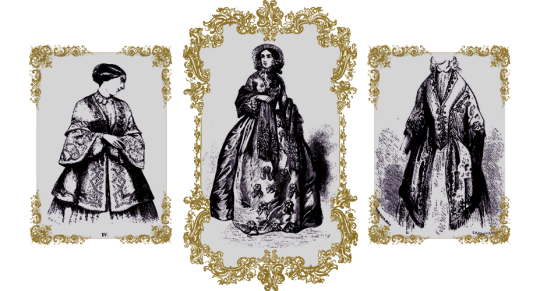
This conclusion was, of course, the result of the "humoral theory", which was widely supported in Europe. Rooting from Greece, it centered around the idea that the human body held inside four types of liquids: two kinds of bile, phlegm, and blood. Each humor was associated with two qualities, either hot or cold, and either wet or dry. Having one of the liquids "in excess" was associated with certain conditions (for blood, it was any that caused redness, for example), hence bloodletting was a naturally sought out practice.
The leeches were placed “inside the nostrils, on the inside of the lower lip, on the chest, and on the side, sometimes by four at a time.”
Leeches could access otherwise inaccessible parts of one's body (such as perineum) and were often used for treatment conditions that were believed to be connected to genitalia - for example, "nymphomaniac" states.
To apply a leech, one would hold a small leech-containing vessel filled with water to the desired spot, wait until it bites, and then gently remove the container; tubes could be used as well.
A whole industry related to leeches was established in the 19th century: propagating leeches rose to the state level of importance and leech keeping became a popular activity. Leeches were, in fact, nearly hunted to extinction in some European countries in the 19th century, including England. Containing leeches started to become complicated: leeches only needed meals once every six months (and thus were not suitable for frequent use) and required specific conditions of containment. Thus, the mechanical leech quickly became a popular invention. The first prototype of 1817, called bdellomètre, is credited to French doctor Jean-Baptiste Sarlandière.

Transactions of the Pharmaceutical Meetings (1855) notes some statistical numbers regarding the "leech hunt" of the 19th century: in imports alone England received 8 million leeches annually, besides the large numbers collected within the country. The practice of using mechanical leeches (two types for different purposes) is mentioned as "ingenious" and discussed as a great opportunity to keep the natural leech healthy. The book tracks down purchases of various vessels for fresh water used as leech enclosures.
Actual preservation and propagation of leeches are described in various books of the time, though the peak of such publications in England comes around in the 1850s.
In 1855, Specification of Nathaniel Johnston: Breeding, Rearing and Carrying Leeches is published. Johnston, whilst in Paris, invented an apparatus for keeping and breeding medicinal leeches: a complicated water vessel to keep leeches at the perfect temperature and humidity for the breeder - the inventor titled these containers hirudinieres. A similar invention was marked by another author in Specification of George Lifford Smartt: Vessels for Preserving Leeches and Fish Alive.

There was a lot of thought and effort put into keeping leeches healthy and vital - either for medicinal purposes or out of personal fascination.
#༺☆༻ 𝕮𝔞𝔫𝔦𝔰 𝕸𝔞𝔧𝔬𝔯 ༺☆༻#historyblr#english history#french history#victorian history#medical history#victorian era#victorian#18th century#19th century
58 notes
·
View notes
Text

For Ytasha Womack, the Afrofuture Is Now
The writer and filmmaker discusses the blend of theoretical cosmology and Black culture in Chicago’s newest planetarium show.
Ytasha Womack, a screenwriter on “Niyah and the Multiverse,” currently playing at the Adler Planetarium in Chicago, is the author of numerous works including “Black Panther: A Cultural Exploration."
By Katrina Miller, New York Times, March 16, 2024.
On Feb. 17, the Adler Planetarium in Chicago unveiled a new sky show called “Niyah and the Multiverse,” a blend of theoretical cosmology, Black culture and imagination. And as with many things Afrofuturistic, Ytasha Womack’s fingerprints are all over it.
Ms. Womack, who writes both about the genre and from within it, has curated Afrofuturism events across the country — including Carnegie Hall’s citywide festival — and her work is currently featured in the Smithsonian’s National Museum of African American History and Culture. Afrofuturism is perhaps most popularly on display in the “Black Panther” films, which immerse viewers in an alternate reality of diverse, technologically advanced African tribes untouched by the forces of colonialism. (In 2023, Ms. Womack published “Black Panther: A Cultural Exploration,” Marvel’s reference book examining the films’ influences.)
But examples of the genre include the science fiction writer Octavia Butler, the Star Trek character Nyota Uhura and the cyborgian songs of Janelle Monáe. Some even envision the immortality of Henrietta Lacks, a Black woman whose cells were taken without consent for what became revolutionary breakthroughs in medicine, as an Afrofuturist parable.
Ms. Womack was one of the scriptwriters for “Niyah and the Multiverse.” She spoke with The New York Times about what Afrofuturism means to her, the process of weaving the genre’s themes with core concepts in physics and how the show aims to inspire. This conversation has been condensed and edited for clarity.
How do you define Afrofuturism?
Afrofuturism is a way of thinking about the future, with alternate realities based on perspectives of the African diaspora. It integrates imagination, liberation, technology and mysticism.
Imagination is important because it is liberating. People have used imagination to transform their circumstances, to move from one reality to another. They’ve used it as a way to escape. When you are in challenging environments, you’re not socialized to imagine. And so to claim your imagination — to embrace it — can be a way of elevating your consciousness.
What makes Afrofuturism different from other futuristic takes is that it has a nonlinear perspective of time. So the future, past and present can very much be one. And that’s a concept expressed in quantum physics, when you think about these other kinds of realities.
Those alternate realities could be philosophical cosmologies, or they could be scientifically explained worlds. How we explain them runs the gamut, depending on what your basis for knowledge is.
Which Afrofuturist works have influenced you?
I think about Parliament-Funkadelic, a popular music collective of the 1970s. As a kid, their album covers were in my basement. A lot of artists during that era — Herbie Hancock, Miles Davis, Earth, Wind & Fire, Labelle — had these very epic, Afrofuturistic album covers, but Parliament-Funkadelic sticks out. There’s one depicting Star Child, the alter ego of George Clinton, the lead musical artist, emerging from a spaceship. That sort of space-tastic imagery was abounding for me as a kid.
“The Wiz,” a reimagining of “The Wizard of Oz,” was on all the time in my house growing up. It had this fabulosity to it — a heightened dream world that reflected 1970s New York. You had the Twin Towers in Emerald City, the empty lots Dorothy walked through with all the trash, the Wicked Witch running a fashion sweatshop, representing the garment district. The film took an urban landscape and made it fabulous, tying in this theme of Dorothy coming into her own through her journey.
Those are images that had a very strong impact on me. As I matured, I got into house music and dance, and began to see relationships between rhythm, movement, space and time. It’s not always something I can give language to, but it’s certainly become a basis for how I talk about metaphysics, in a physical kind of way.
What inspired your team to create “Niyah and the Multiverse”?
We wanted to tell a story about a young girl named Niyah, who wants to be a scientist and who is figuring out who she is — not just on Earth, but also in the universe.
Niyah looks for insight from her grandparents, who explain some of the symbolism of the African artwork in her home. She thinks about concepts she has learned from her science teacher. And she even meets her future self, who is a theoretical astrophysicist. Together, the two explore some of the more popular multiverse theories that scientists are looking at today.
Which theories are those?
Niyah learns about the many-worlds theory, which is this idea that all of your choices evolve into different universes. The choices you make create new paths, essentially creating multiple existences of yourself.
She learns about bubble theory, which says that after our Big Bang, more universes sort of bubbled off, each with their own laws of physics. Niyah also explores the idea of shadow matter, in which particles get reassembled as similar entities in mirror universes.
So there’s this parallel between Niyah learning about the multiverse and also exploring her own identity through her ancestral heritage.
Right. Because both of these are paths of meaning, different ways of understanding who we are. Afrofuturists tend to think in a way that is accepting of a lot of different realities anyway, so it was a pretty seamless experience to weave the physics and other aspects of the genre together. There’s already this intergenerational, or interdimensional, element to the conversation and the art that comes out of it.
The show is presented in the planetarium dome, which has a 360-degree screen, so it’s very immersive. Stepping into the space and watching the show feels like an interdimensional experience of its own.
The first audience to see it had a very emotional response. Some people were crying. There were Black women in the audience saying they always wanted to see this kind of imagery, that they had wanted to be scientists at one point in time. Others were deeply touched by the vibrancy of the show, of how it was able to bring these multiverse theories to life.
It’s impressive that these physics concepts, which can be difficult for people to understand or relate to, are made so accessible with examples that are not only imaginative but very rooted in Black culture.
Right. And it wasn’t difficult for us to do that, because as Afrofuturists, we operate in that space. It’s just about mirroring a way of being that we have always been immersed in.
I think “Niyah and the Multiverse” expresses that we all have different relationships to space and time. We are all looking to understand who we are, where we come from and where we can go in this broader space-time trajectory.
And maybe for some, the show normalizes the idea that there are kids who are Black who dream and are curious about the world. That curiosity can take them in the direction of becoming an artist, or becoming a scientist.
What challenges did you face in tackling the multiverse?
In trying to write some elements of the story, we had to push our own imagination to come up with what a universe might look like if you’re not using the laws of physics that exist in this one. Like, what does it mean to have your particles reassembled into something else? Sometimes we’d come up with ideas for different worlds, and our science consultants would say that already exists.
For me, this shows the beauty of bridging art and science. Artists can give visuals and narratives to ideas that scientists come up with. Or it could happen the other way around: Artists imagine something, and scientists think about what might be needed to support a universe that looks that way.
Image
13 notes
·
View notes
Text

Happy Birthday Roald Dahl, he would be 107 today
As a child my favourite books were:
George's Marvelous Medicine
Fantastic Mr Fox
Charlie and the Chocolate Family
24 notes
·
View notes
Text
20 notes
·
View notes
Text
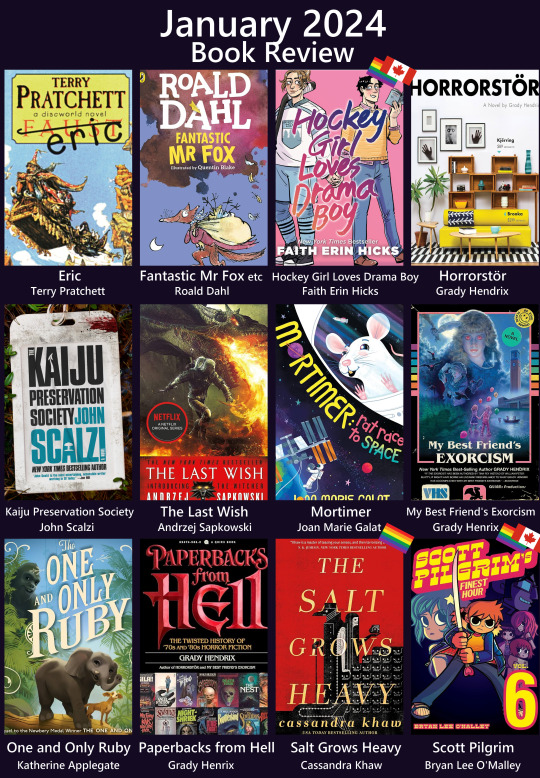
Found some excellent horror-related and horror-adjacent books to read this month! Not a common genre for me, so this was fun. Really can't recommend Grady Hendrix as an author enough, Horrorstör was definitely my favourite novel from this month
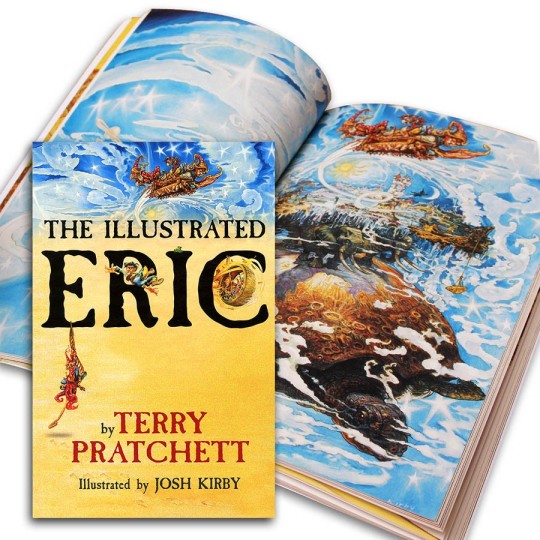
Eric
I hate saying it because I love the Discworld and Terry Pratchett is easily my favourite author, but man Eric did not do it for me. You could see some good bones in it, but as far as I’m concerned all the interesting bits that appeared were done significantly better in later books. It had some humour moments, but the only bits that I really enjoyed were when the Luggage was around.
This story followed a young, teenaged, would-be demon summoner who, instead of summoning a demon, accidentally winds up with the incompetent and fearful wizzard Rincewind. Obligated to answer this kid’s wishes, they end up bouncing through time and space while attempting to survive what each wish had to throw at them.
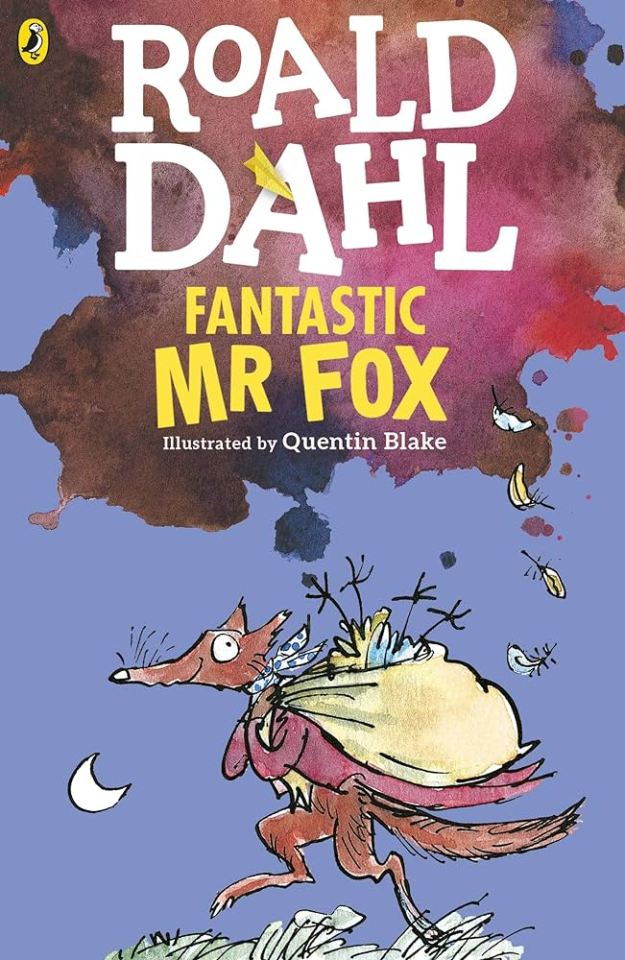
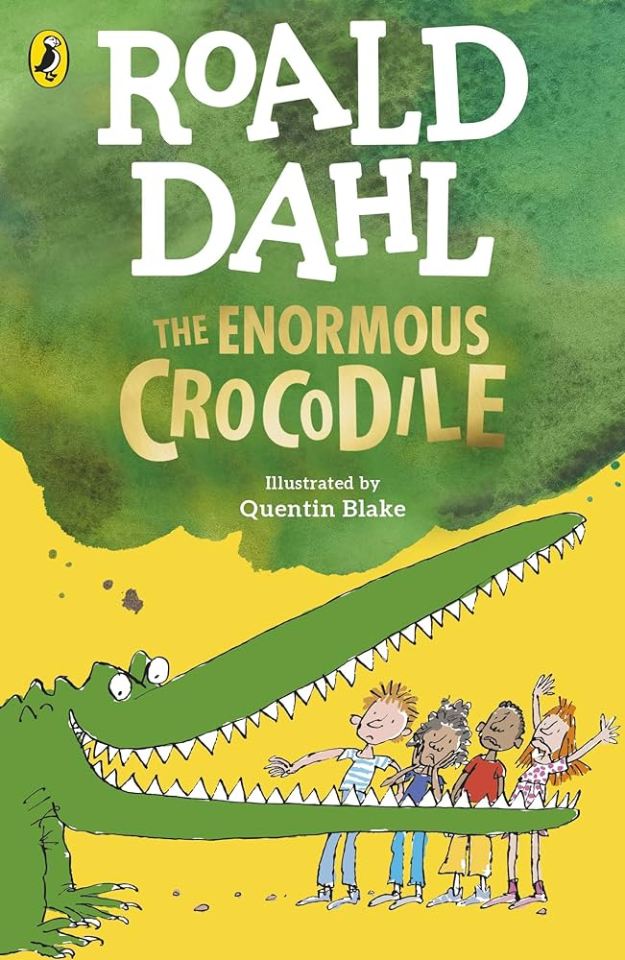
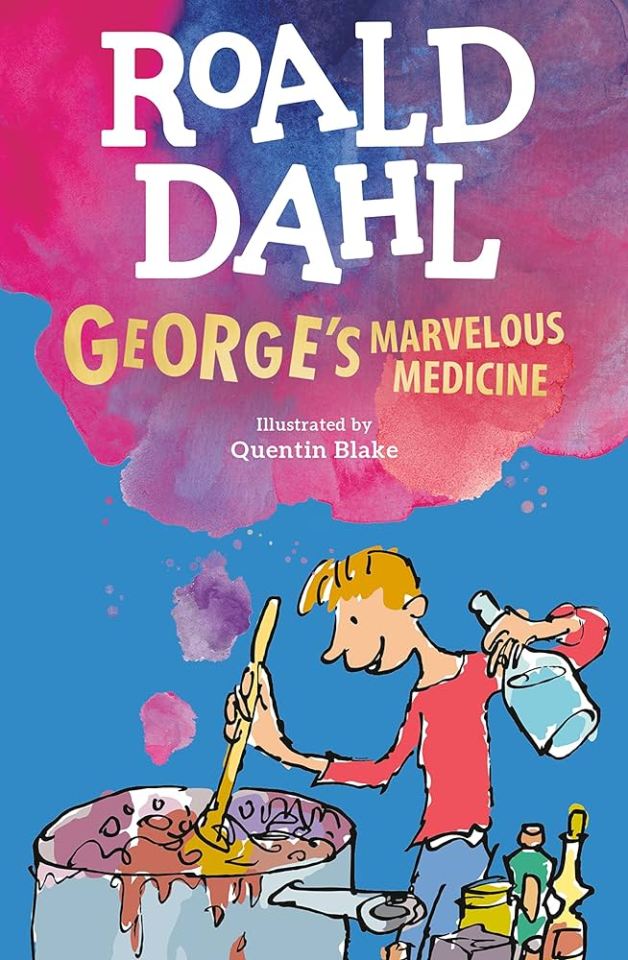
Fantastic Mr Fox / Esio Trot / George’s Marvellous Medicine / The Enormous Crocodile
I went on a Dahl kick this month, I wanted to work through some of his shorter works that I’ve never bothered to read before. All of them were honestly delightful, I had a blast. Esio Trot was probably the weakest of the lot, but the other three were so much fun. The Fantastic Mr Fox may be my favourite just by virtue of being the most fleshed out, but listening to The Enormous Crocodile be read by Stephen Fry is an unparalleled experience.
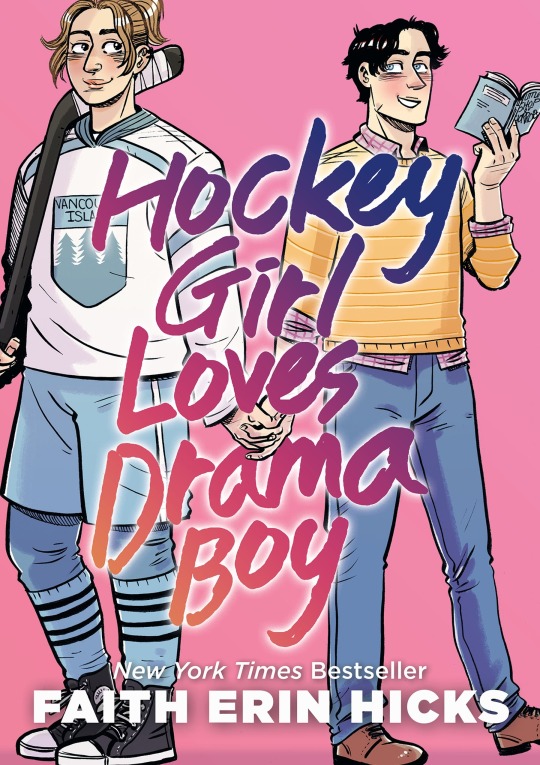
Hockey Girl Loves Drama Boy
A story I enjoyed more than I expected. I have a strange soft spot for hockey narratives, but that might just be the Canadian in me. Alix’s one true love is hockey, it’s the one place she feels competent and happy, but her team captain is making the space increasingly hostile until, unable to take the bullying, she strikes out and punches her captain. Shocked by her own violence and given an ultimatum by the coach to get her temper under control, she ends up going to popular and poised Ezra, hoping that he could show her how to deal with harassment without losing her cool in a way that scares her.
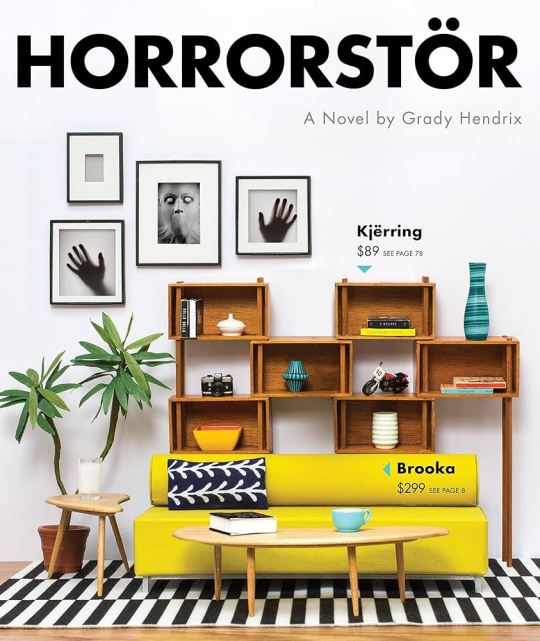
Horrorstör
Easily the best book I read this month, this book was amazing, I can’t recommend it enough. It’s a “haunted house but in a knock-off Ikea” and I mostly picked it up as a joke because the premise sounded hilarious. But I was familiar with the author (I’d read The Southern Book Club’s Guide To Slaying Vampires a couple years ago) and trusted him to do something interesting with the premise. And wow. Just wow. It is very much a classic, grisly, nauseating horror premise, but in a way that explores capitalism, exploitation, and treatment of prisoners and the mentally ill. It’s been a long time since I read a book that actually gave me chills, but I had to put this book down and walk away from it occasionally, it was intense enough.

The Kaiju Preservation Society
As a Pacific Rim lover, this book was everything I’d ever wish for it to be. It’s such a love letter to the kaiju genre as well as environmental conservation, and it’s speculative biology is fascinating!
After being fire from his job at the beginning of the Covid pandemic lockdown in New York City, Jamie Gray is barely making ends meet by acting as a delivery driver. He doesn’t know how he can possibly continue on like this, until he runs into an old friend who offers him a strange and intensely secretive job offer. With nothing to lose, Jamie agrees and finds himself on an alternate Earth, helping to study creatures that he only knows from campy monster movies, now very much real.
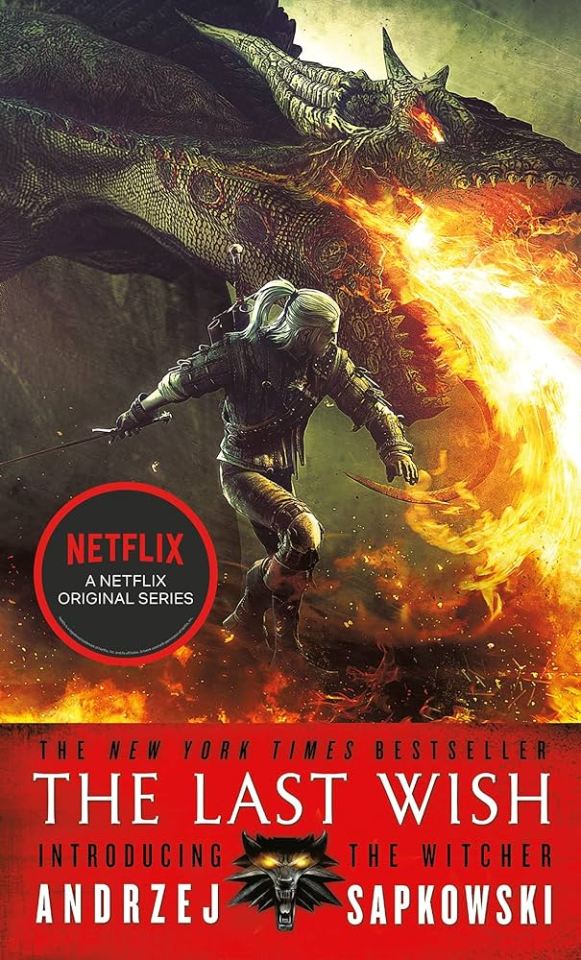
The Last Wish
Felt an urge to reread a Witcher book, so I’ve been picking my way through the short stories. They continue to be a lot of fun, and it felt good to reconnect with the original narrative voice again after reading a lot of fanfiction over the years. For anyone who has someone existed post-Netflix version without picking up the general premise: Geralt of Rivia is a "witcher", a person who was specifically trained to wield weapons and magics to hunt dangerous monsters that threaten humans. This is a collection of short stories that show Geralt on some of the various hunts he's had during the decades of his over-long life. (It's significantly better than the Netflix version, very much worth the read if you like classic high fantasy and/or fairy tale retellings.)
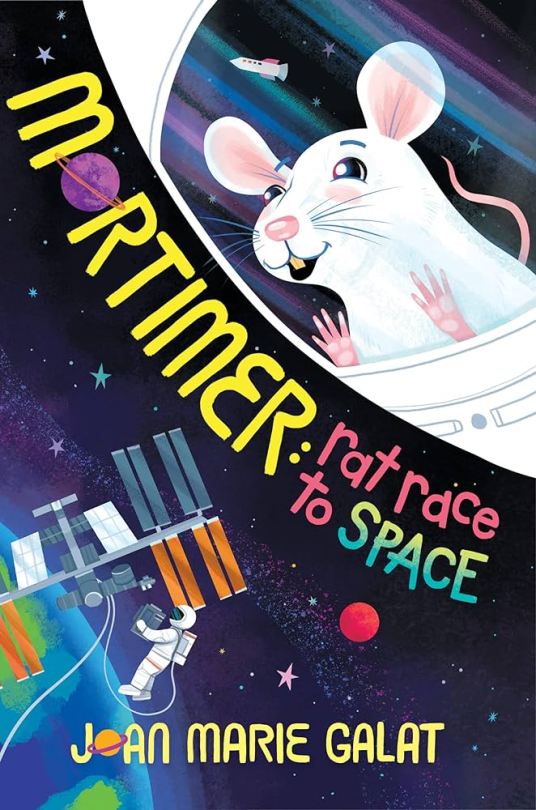
Mortimer: Rat Race to Space
A very dull youth novel. Mortimer is a lab rat at Houston who has aspirations to go on the space program and prove that rats are better suited for colonizing Mars than humans. If you’re a seven year old who wants to consume space facts, this is the book for you. For everyone else, it’s a bit of a slog.
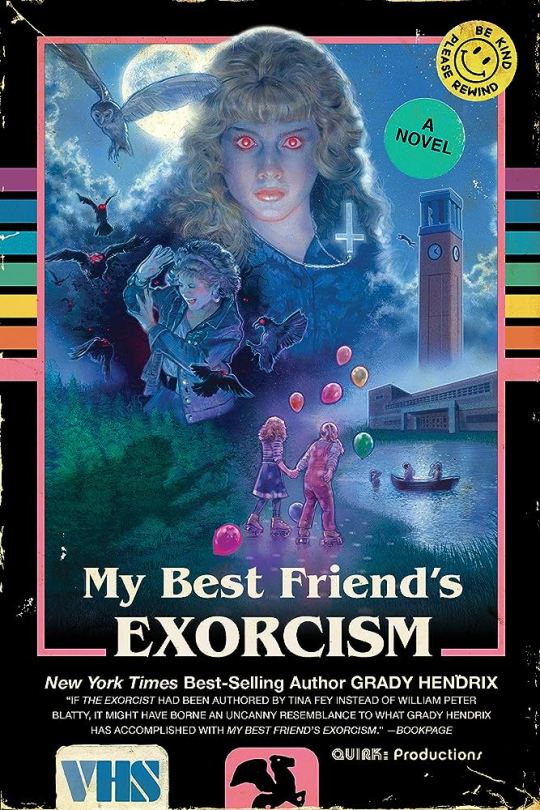
My Best Friend’s Exorcism
Another Grady Hendrix book. This book was undeniably well-written, just as masterful as his others, but I didn’t enjoy it as much. A bit too much high school narrative and not enough all out horror. The conclusion was pretty decent, but the rest was… fine. A fun love letter to the 1980s though as you learn about two best friends and how they grow up together. ...A bit of a debate whether or not it warrants a queer marker or not, I'm not even going to make that attempt.
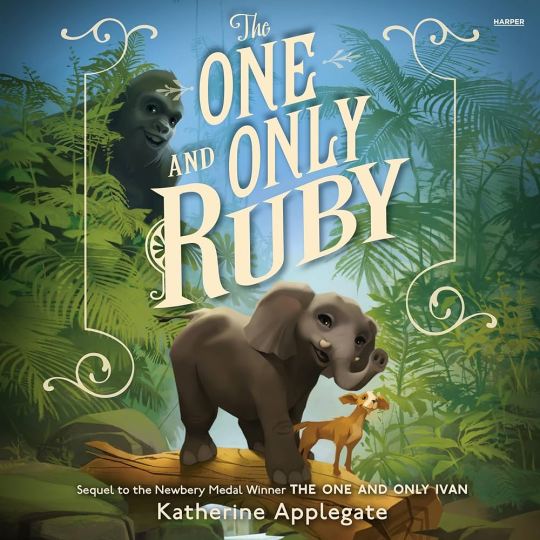
The One and Only Ruby
The newest book from the One and Only Ivan series. Much like The One and Only Bob this book was… fine. The original of the series was really wonderful and felt quite inspired, inspired by the real life story of a gorilla that’s kept in a small cage in a mall complex. The next two books take place after that one and each follows one of Ivan’s friends (Bob the dog and Ruby the baby elephant). A fun enough addition to the series, the art is still cute, and it has decent things to say about the hunting of endangered animals, but it was nothing amazing.
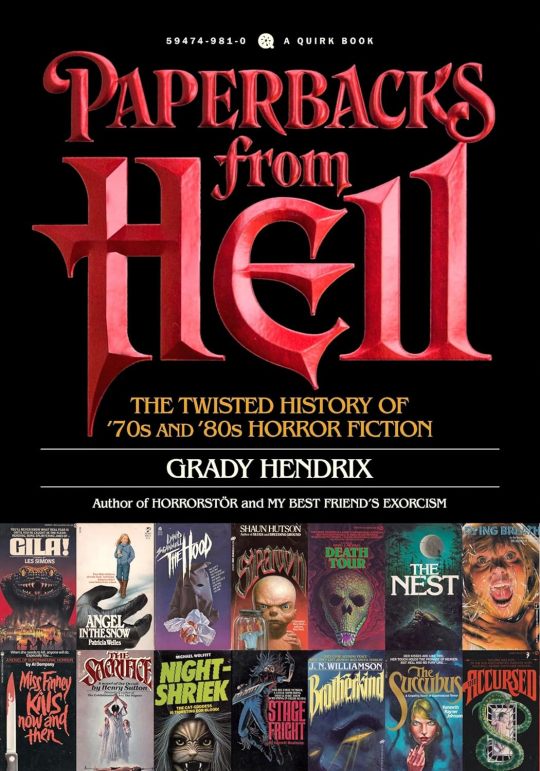
Paperbacks from Hell
Look, I really just felt the desperate need to read a bunch of Hendrix novels after being so violently consumed by Horrorstör. This is a nonfiction book in which Hendrix dives into the evolution and popular tropes of horror novels throughout the 1980s, with the cover art being the driving thesis throughout. You can tell how much he loves these weird, pulpy horrors and it makes you want to go and find a bunch of these and read them yourself. It really is an interesting book, even if you aren’t a great horror lover (which I wouldn’t consider myself).
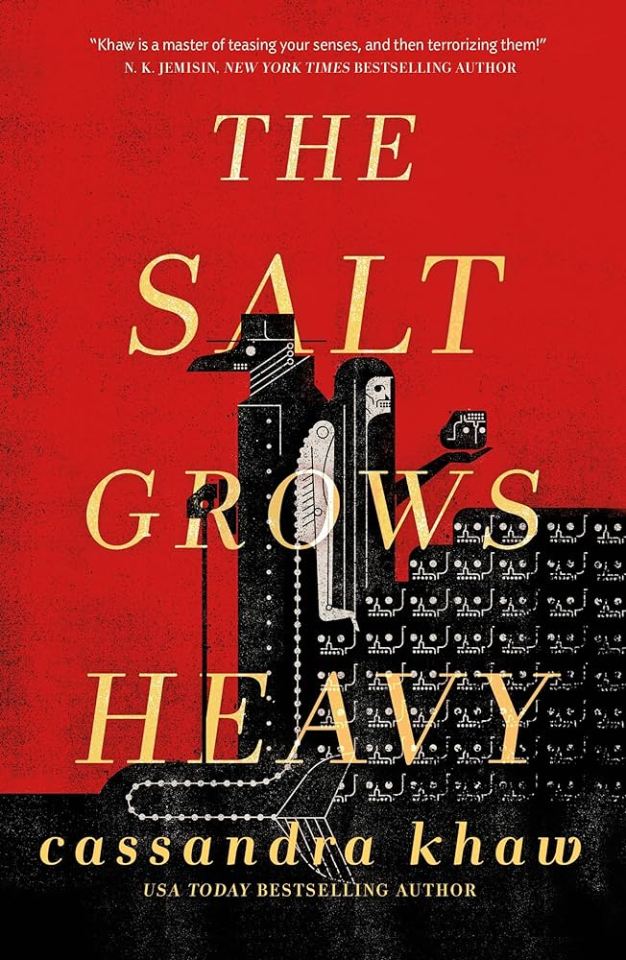
The Salt Grows Heavy
Now this is a fucking novella. An absolutely unhinged, body-horror rich retelling of both The Little Mermaid and Frankenstein. Yeah. After the complete destruction of her husband’s kingdom at the hands (and jaws) of her own children, the Mermaid finds herself travelling with a mysterious Plague Doctor. I won’t go further into this except to say that the way it portrays morality, life, death, and the mutability of flesh is just… something else. Would recommend. But not if you have a weak stomach.

Scott Pilgrim
A classic. I watched the new animated series with my brother and felt the need to go back and reread the entire original series. Absolutely perfect, no notes, continues to be one of my all time favourite graphic novel series. The magical realism is just *chef’s kiss*.
#book review#book reviews#queer lit#scott pilgrim#grady hendrix#horrorstor#my best friend's exorcism#the witcher#the last wish#kaiju preservation society#roald dahl#terry pratchett#discworld#the salt grows heavy#the one and only ivan#the one and only ruby#katherine applegate#mortimer rat race to space#hockey girl loves drama boy#canlit#canadian
14 notes
·
View notes